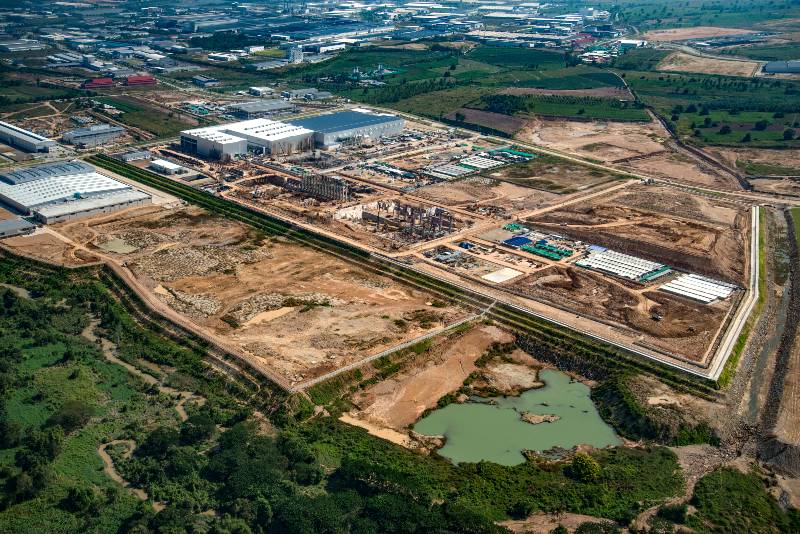Commercial real estate asset repositioning is a powerful tool for property owners and investors looking to breathe new life into underperforming assets. In today’s dynamic market, the ability to adapt and transform properties to meet evolving tenant demands is more critical than ever. As a seasoned professional with over 18 years of experience, I’ve witnessed firsthand the tremendous value that can be unlocked through strategic repositioning. In this article, we’ll explore the key elements of a successful repositioning process and how you can maximize the potential of your commercial real estate assets.
Key Takeaways
- Asset repositioning is a crucial strategy for maximizing the value of underperforming commercial real estate properties.
- A successful repositioning process involves thorough market research, strategic planning, and effective execution.
- By incorporating sustainable practices, leveraging technology, and adapting to changing market trends, property owners can unlock significant value in their assets.
Table of Contents
Assessing the Need for Asset Repositioning
The first step in any successful repositioning project is identifying the need for change. This involves a thorough analysis of your property’s performance, market conditions, and tenant preferences. Some key indicators that your property may be a prime candidate for repositioning include:
- Consistently high vacancy rates and low occupancy rates
- Lagging rent growth compared to market averages
- Outdated building systems and amenities
- Shift in local demographics or industry trends
By conducting a comprehensive property condition assessment, you can gain a clear understanding of your asset’s strengths, weaknesses, and opportunities for improvement. This information will serve as the foundation for developing a targeted repositioning strategy that aligns with your goals and the needs of your target tenants.
Developing an Asset Repositioning Strategy
Once you’ve determined that repositioning is the right course of action, it’s time to develop a comprehensive strategy. This process involves several key components:
Market research and analysis: Conduct thorough research to identify target tenant profiles, assess competitor properties, and understand local market trends. This information will help you determine the optimal property use and tenant mix for your asset.
Property improvements and renovations: Based on your market analysis, identify the specific improvements and renovations needed to attract your target tenants. This may include upgrading building systems, enhancing amenities, or reconfiguring floor plans to meet current market demands.
Cost estimation and ROI analysis: Develop detailed cost estimates for your proposed improvements and conduct a thorough return on investment (ROI) analysis to ensure that your repositioning plan is financially viable.
Placemaking and community engagement: Consider how your repositioning strategy can contribute to the broader community and create a sense of place. Incorporating public spaces, local art, or community events can help differentiate your property and attract tenants who value a strong sense of community.
By carefully crafting a repositioning strategy that addresses the unique needs of your property and target market, you can position your asset for long-term success and maximize its value potential.
Key Elements of Successful Asset Repositioning
A successful asset repositioning project requires a multifaceted approach that addresses a range of key elements:
Enhancing building performance and energy efficiency: Investing in energy-efficient systems, such as HVAC upgrades, LED lighting, and smart building technology, can significantly reduce operating costs and appeal to environmentally conscious tenants.
Implementing sustainable practices and green building design: Incorporating sustainable features, such as green roofs, rainwater harvesting, and renewable energy systems, can help differentiate your property and attract tenants who prioritize sustainability.
Improving building aesthetics and amenities: Updating the building’s exterior, common areas, and amenities can create a more inviting and modern atmosphere that appeals to today’s tenants. Consider adding features like collaborative workspaces, fitness centers, or outdoor lounges to enhance the tenant experience.
Leveraging technology and smart building systems: Integrating advanced technology, such as IoT sensors, mobile apps, and digital signage, can streamline building operations, improve tenant comfort, and create a more engaging and interactive environment.
Repurposing spaces for mixed-use developments: Transforming underutilized spaces into mixed-use developments that combine residential, office, and retail components can help diversify your tenant base and create a more vibrant and resilient asset.
Adapting to changing retail trends and the impact of e-commerce: As e-commerce continues to reshape the retail landscape, repositioning strategies for retail properties must evolve to incorporate experiential elements, omnichannel integration, and a focus on service-oriented tenants.
Incorporating experiential retail and omnichannel strategies: Embrace the growing trend of experiential retail by incorporating immersive, interactive, and Instagram-worthy elements into your retail spaces. Seamlessly integrate online and offline experiences to create a cohesive and engaging customer journey.

Navigating the Asset Repositioning Process
Successfully navigating the asset repositioning process requires careful planning, coordination, and execution. Some key considerations include:
Assembling a skilled advisory team: Surround yourself with a team of experienced professionals, including architects, engineers, contractors, and leasing agents, who can provide valuable insights and expertise throughout the repositioning process.
Obtaining necessary permits and approvals: Ensure that your repositioning plans comply with all relevant zoning regulations, building codes, and local ordinances. Work closely with your advisory team to navigate the permitting process and secure necessary approvals.
Managing construction and renovation projects: Develop a detailed project timeline, budget, and risk management plan to ensure that your repositioning project stays on track and within budget. Regularly communicate with your team and stakeholders to address any issues or changes that arise.
Developing effective leasing strategies and marketing plans: Craft a targeted leasing strategy that aligns with your repositioned property’s unique value proposition and target tenant profile. Develop a comprehensive marketing plan that leverages digital and traditional channels to reach your ideal tenants and showcase your property’s enhanced features and amenities.
Mitigating risks and managing stakeholder expectations: Proactively identify and address potential risks, such as construction delays, budget overruns, or market shifts, to minimize their impact on your repositioning project. Regularly communicate with stakeholders, including investors, lenders, and tenants, to manage expectations and maintain transparency throughout the process.
Financing Asset Repositioning Projects
Securing the necessary financing is a critical component of any successful asset repositioning project. Some key financing strategies to consider include:
Exploring financing options and investment strategies
Evaluate a range of financing options, such as traditional bank loans, bridge loans, or equity partnerships, to determine the most suitable approach for your project and financial goals.
Leveraging tax incentives and government grants
Research and take advantage of available tax incentives, such as the Historic Tax Credit or the New Markets Tax Credit, which can provide significant financial benefits for qualifying repositioning projects.
Attracting equity investors and joint venture partners
Consider partnering with equity investors or forming joint ventures to access additional capital and expertise for your repositioning project. Develop a compelling investment thesis that highlights the potential returns and value-add opportunities of your repositioned asset.
Evaluating the potential for public-private partnerships
Explore opportunities to collaborate with local governments or community organizations through public-private partnerships (PPPs). PPPs can provide access to additional resources, incentives, and support for your repositioning project, particularly if it aligns with broader community development goals.
Case Studies and Success Stories
To illustrate the power of effective asset repositioning, let’s examine a few real-world success stories:
The Renovation of the Historic Culver Hotel
The iconic Culver Hotel in Los Angeles underwent a major repositioning project that transformed the nearly century-old building into a thriving boutique hotel. By carefully preserving the hotel’s historic charm while integrating modern amenities and design elements, the repositioning project attracted a new generation of guests and solidified the hotel’s position as a local landmark.
The Transformation of the Battersea Power Station
The decommissioned Battersea Power Station in London is undergoing a massive redevelopment project that will transform the industrial icon into a vibrant mixed-use community. The project combines residential, office, retail, and cultural spaces, creating a new destination that honors the site’s heritage while embracing the future.
The Evolution of the 11 Times Square Office Tower
The repositioning of the 11 Times Square office tower in New York City demonstrates the power of strategic renovation and tenant curation. By upgrading the building’s amenities, integrating advanced technology, and attracting a diverse mix of tenants, the repositioning project successfully revitalized the property and enhanced its competitive position in the market.
Future Trends and Opportunities in Asset Repositioning
As we look to the future, several emerging trends and opportunities are shaping the landscape of commercial real estate asset repositioning:
The rise of flexible and adaptable spaces: The growing demand for flexible and adaptable spaces, driven by changing work patterns and tenant preferences, is creating new opportunities for property owners to reposition their assets to meet these evolving needs.
The increasing importance of health and wellness: In the wake of the COVID-19 pandemic, there is a heightened focus on health and wellness in commercial real estate. Repositioning projects that prioritize features such as improved air quality, touchless technology, and outdoor spaces will be well-positioned to attract health-conscious tenants.
The integration of smart city technologies: As cities become increasingly connected and data-driven, commercial real estate assets that integrate smart city technologies, such as 5G connectivity, energy management systems, and predictive maintenance, will be better equipped to meet the needs of future tenants and communities.
FAQs
What are the signs that a commercial real estate asset needs repositioning?
There are several signs that indicate a commercial real estate asset may need repositioning. These include consistently high vacancy rates, lagging rent growth compared to market averages, outdated building systems and amenities, and shifts in local demographics or industry trends. If a property is struggling to attract and retain tenants, generating below-market rental income, or falling behind in terms of energy efficiency and modern amenities, it may be time to consider a repositioning strategy to enhance the asset’s competitiveness and long-term value.
How can property owners maximize ROI through asset repositioning?
To maximize ROI through asset repositioning, property owners should take a strategic and data-driven approach. This involves conducting thorough market research to identify target tenant profiles, assessing competitor properties, and understanding local market trends. By aligning property improvements and renovations with the needs and preferences of target tenants, owners can create a more compelling value proposition and command higher rental rates. Additionally, implementing energy-efficient upgrades, incorporating sustainable features, and leveraging smart building technology can help reduce operating costs and attract environmentally conscious tenants, further boosting ROI.
What are some innovative placemaking strategies that can be employed during asset repositioning?
Innovative placemaking strategies can help differentiate a repositioned asset and create a sense of community that appeals to today’s tenants. Some effective strategies include incorporating public spaces, such as outdoor plazas, green spaces, or rooftop gardens, that encourage social interaction and provide amenities for tenants and the broader community.
How can property owners effectively mitigate risks and manage stakeholder expectations during the repositioning process?
To effectively mitigate risks and manage stakeholder expectations during the repositioning process, property owners should prioritize clear communication and proactive planning. This includes developing a comprehensive risk management plan that identifies potential challenges, such as construction delays, budget overruns, or market shifts, and outlines strategies for addressing them.
What are some successful examples of public-private partnerships in commercial real estate asset repositioning?
Public-private partnerships (PPPs) can be a powerful tool for driving successful commercial real estate asset repositioning projects. One notable example is the redevelopment of the historic Union Station in Denver, Colorado. The project brought together the Regional Transportation District, a private developer, and local government agencies to transform the underutilized station into a vibrant, mixed-use hub that includes transportation services, retail, dining, and event spaces.
How can property owners evaluate the success of a commercial real estate repositioning project?
Property owners can evaluate the success of a repositioning project by monitoring key metrics such as increased property value, higher occupancy rates, improved tenant satisfaction, and a positive impact on profitability. Regularly assessing the performance of the repositioned property against set goals can help in measuring the effectiveness of the repositioning efforts.
What should property owners do if they are considering commercial real estate asset repositioning?
Property owners should start by consulting with real estate professionals or firms that specialize in repositioning commercial properties. They should assess the current market conditions, understand the potential benefits and risks of repositioning, develop a clear investment strategy, and have a realistic timeline for implementing the changes. Property owners can also explore different repositioning strategies and choose the one that aligns best with their goals and target audience.
Conclusion
Commercial real estate asset repositioning is a powerful strategy for unlocking hidden value, transforming underperforming properties, and adapting to the ever-changing demands of the market. By carefully assessing your property’s needs, developing a targeted repositioning strategy, and executing with precision and flexibility, you can breathe new life into your assets and position them for long-term success.
As a seasoned professional in the commercial real estate industry, I’m passionate about helping property owners and investors maximize the potential of their assets. If you’re considering a repositioning project, I invite you to schedule a consultation with me to discuss your goals and explore how we can work together to unlock the hidden value in your commercial real estate assets.




